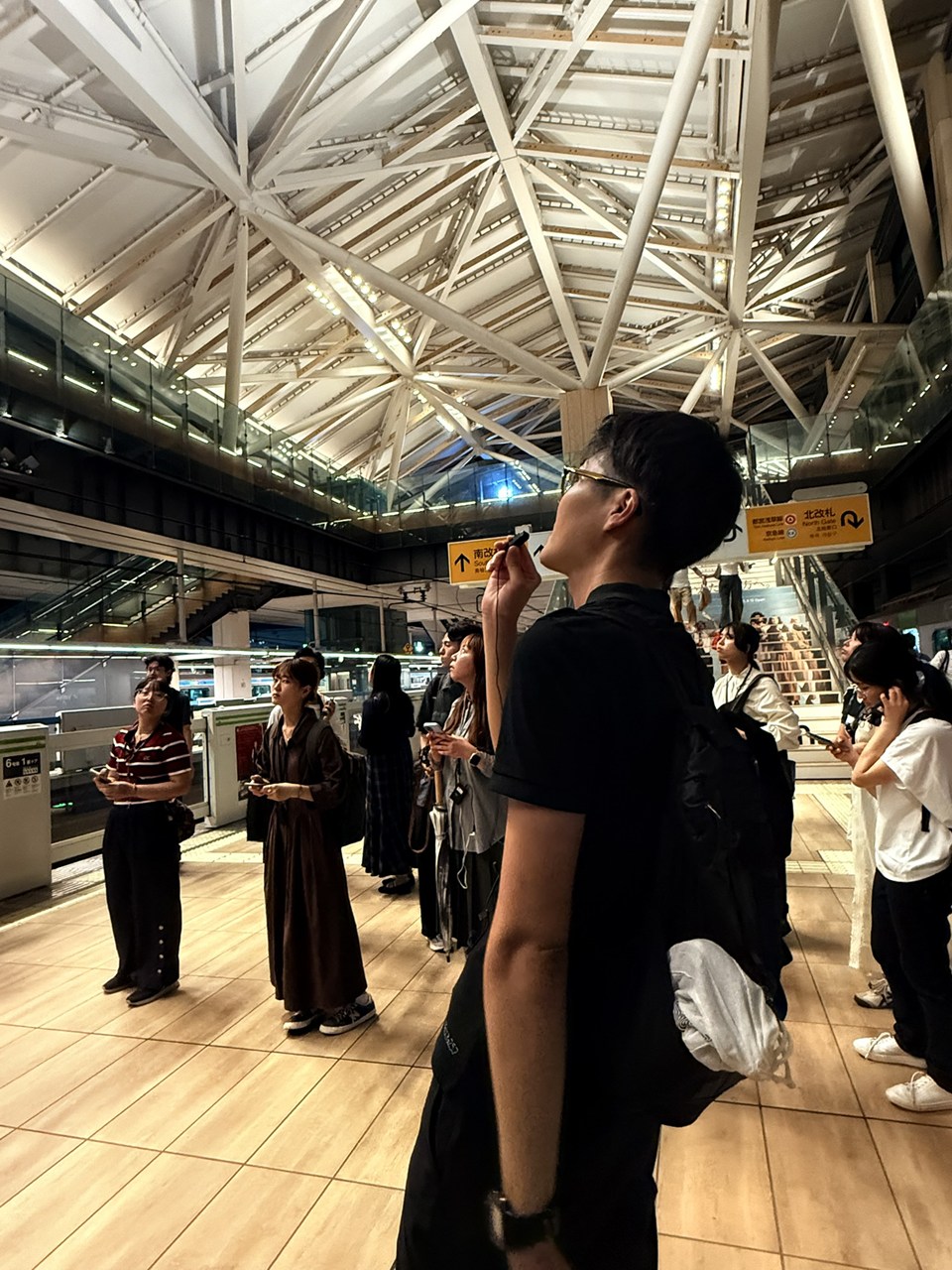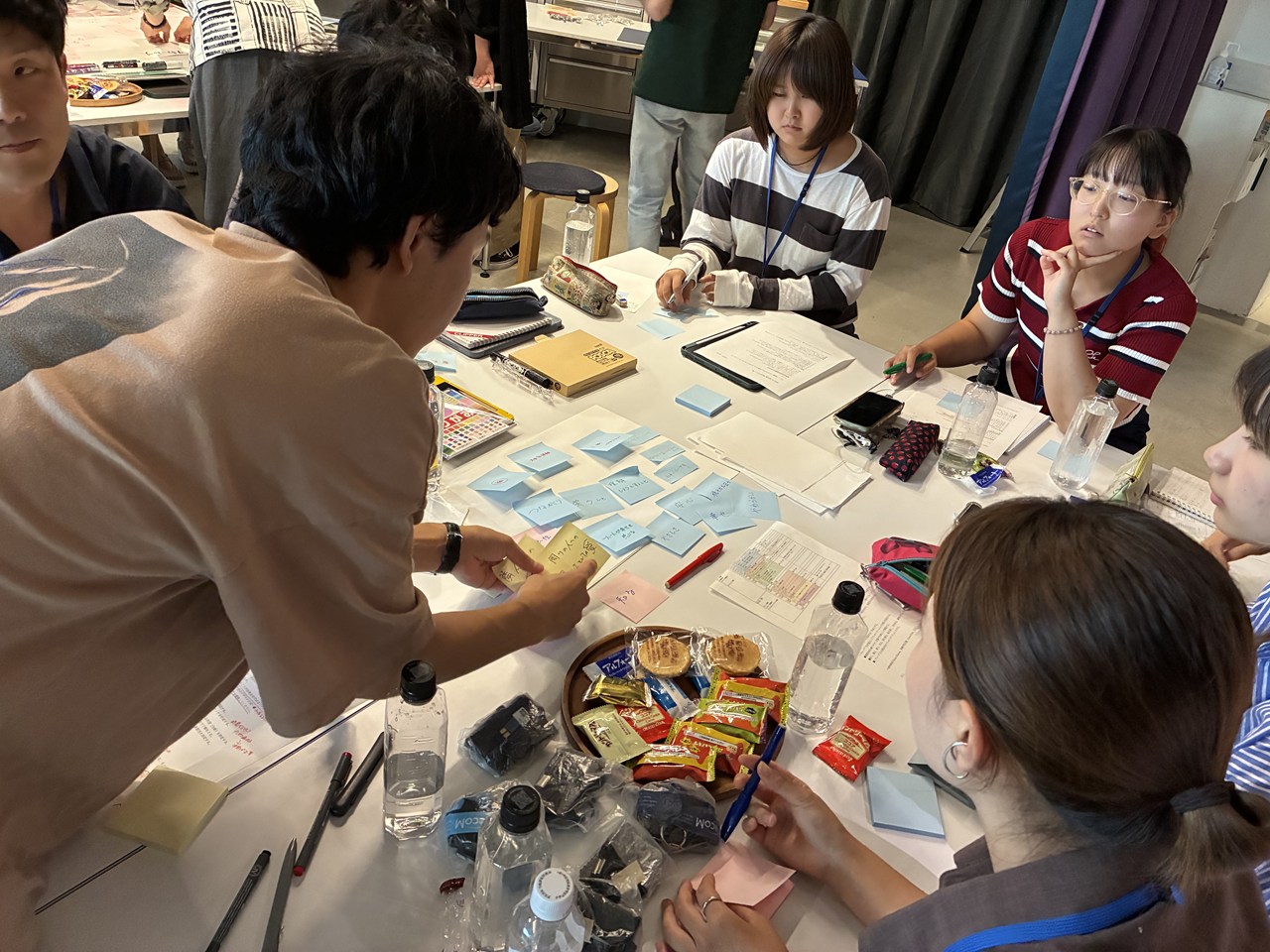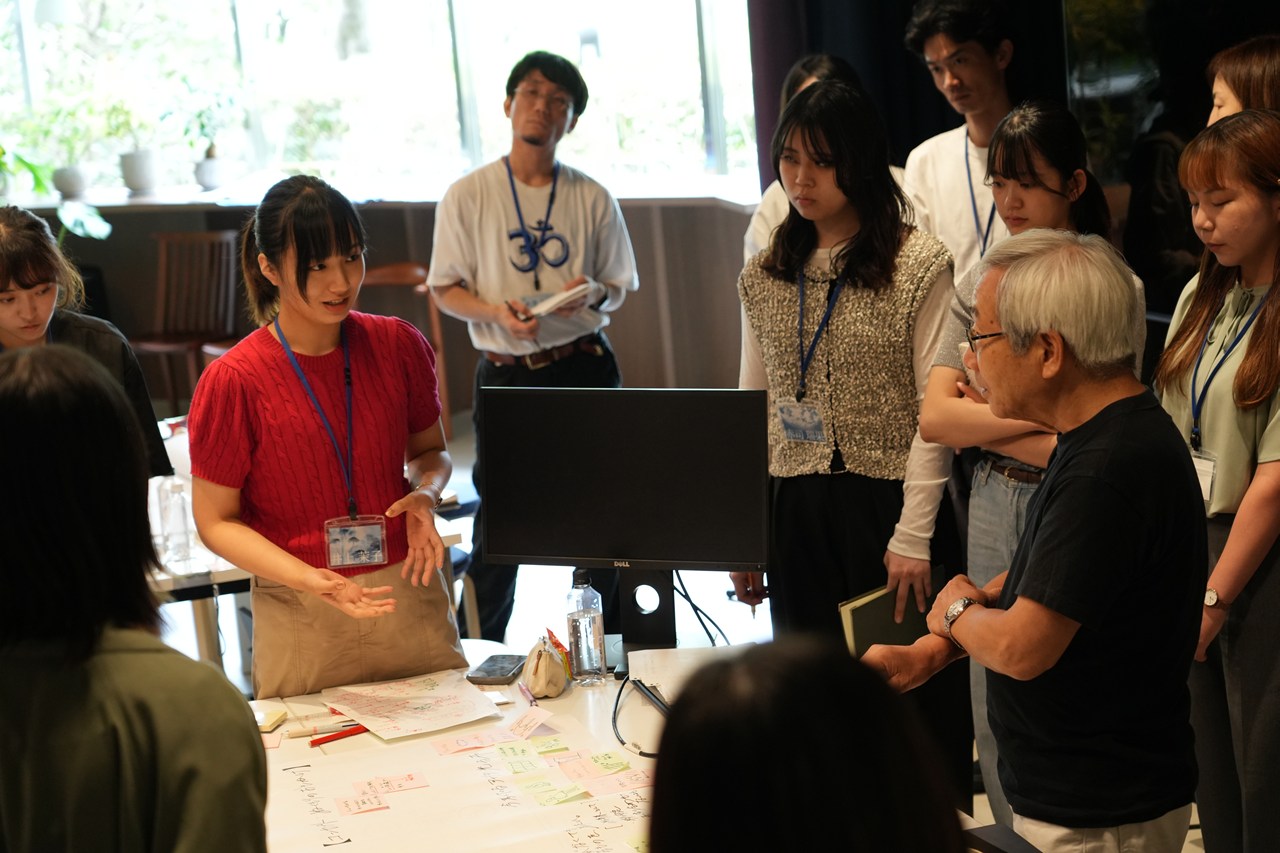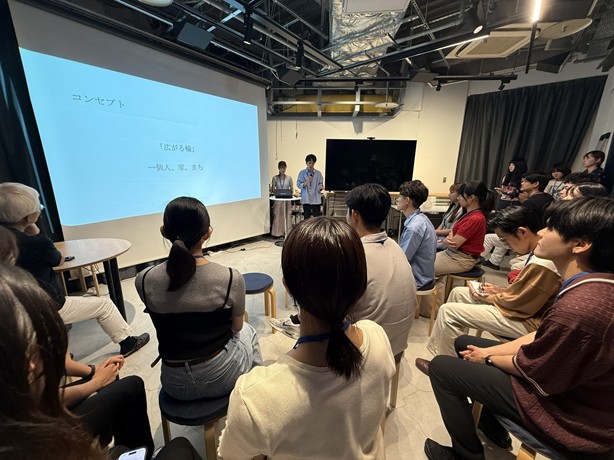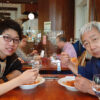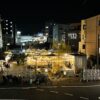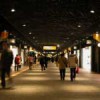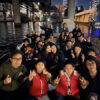Date of Issue: October 24, 2025
・Activity 1 / City Night Survey : Toyosu, Tokyo(2025.06.26)
・Activity 2 / Kaoru Mende / Lighting Design Workshop(2025.09.13-09.15)
City Night Survey : Toyosu, Tokyo
2025.06.26 Yumi Honda +Qiaoxi Wang+ Momoe Nomura
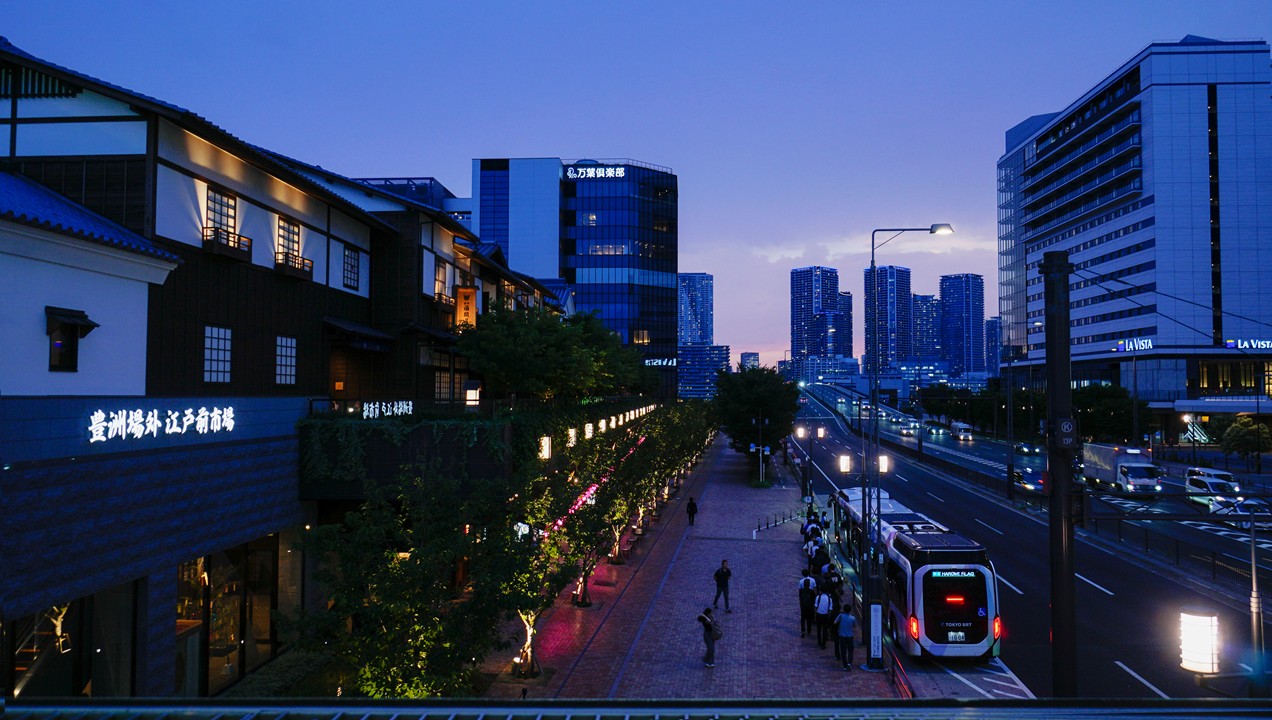
We observed and recorded the nighttime light environment of the newly developed commercial complex Senkyaku Banrai in the Tokyo Bay Area and its surrounding public spaces (green plaza, station area, and Gururi Park). We conducted a multifaceted analysis, including the placement of lighting fixtures, illuminance, and the impression of the space, to determine how light affects the atmosphere of the facility and the city in the Toyosu area, which is being developed as a tourist hub.
The Toyosu area is a point of interest where the latest urban spaces and the lively atmosphere of shitamachi (old downtown) coexist due to redevelopment. We walked through the area around Toyosu Market Station, the green plaza, and Gururi Park, observing how light design impacts the impression, comfort, and safety of the town.
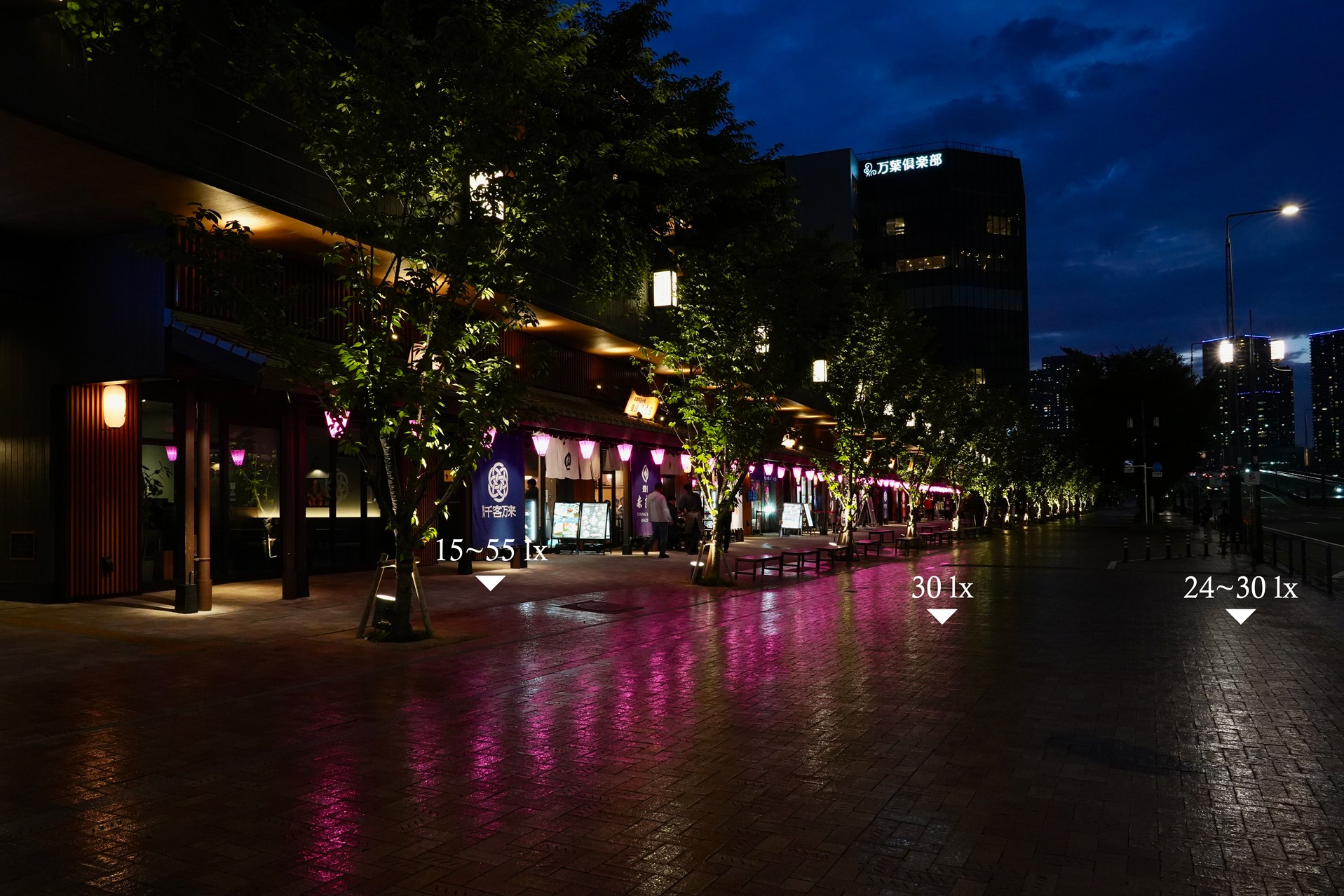
■Senkyaku Banrai
Senkyaku Banrai is a commercial facility that opened in 2024 next to the Toyosu Market. It’s a spot where both tourists and local residents can enjoy the array of restaurants and souvenir shops. Through architecture and lighting design incorporating traditional Japanese motifs, it exudes a uniquely Japanese warmth and vitality, even within the contemporary urban nightscape. The lighting plan inside the facility is unified, as befitting a new commercial complex, and was designed with both aesthetic appeal and functionality in mind. The main path lighting uses warm, incandescent colors, creating a nostalgic atmosphere reminiscent of a Showa-era shopping street. This fosters a welcoming atmosphere for visitors. The main facade featured a mix of diverse light sources, including chōchin, andon (traditional paper lanterns), eave lighting, and projecting signs. However, there was no excessive brightness, and the planned arrangement of lights created a pleasing sense of coherence.

However, some areas of lighting did not harmonize with the streetscape. Pink chōchin were hung in front of a shop. They clashed with the facility’s overall tone and the shop’s color scheme, and their presence was further emphasized by their reflection on the glass, creating a sense of discord with the surroundings. While this color choice might have been made with the cherry blossom season in mind, their harmony with the surroundings should be re-evaluated if they are to be permanent fixtures. Furthermore, the spotlights illuminating the street trees were very large, resulting in excessive light for the space. These lights, which stood out more than necessary, felt like an overdramatization rather than a function, and served as “light noise” that disrupted the space.
Despite the exterior being based on traditional Japanese design, the building did not feel like a “floating entity” even though it was surrounded by cutting-edge high-rise buildings. The softness of the lighting maintained visual harmony, making it blend in with its surroundings surprisingly well. Additionally, solar-powered andon were installed in the exterior on the second floor, demonstrating an attempt to balance environmental consideration with traditional design. These elements will have a significant impact on the urban lighting plan and can be evaluated positively from a sustainability standpoint.

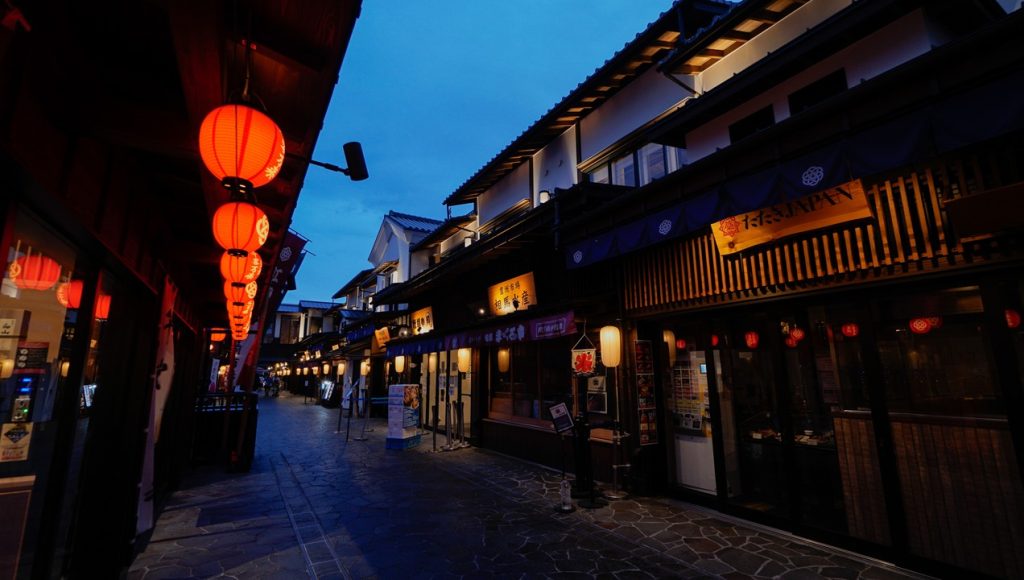
■Green Plaza
The Green Plaza, which is maintained on the rooftop of the Toyosu Market, is open until 11 p.m. and serves as a place of relaxation for local residents and market workers. Bollard lights and handrail lights, placed among the plantings and lawns, illuminated the plaza subtly yet effectively. The lighting was installed to blend into the landscape, softly encompassing the ground and the surroundings. By suppressing the dominance of artificial light and emphasizing continuity with natural light, a calm, subdued space was created. We highly rated the placement of the light fixtures within the Green Plaza because they did not obstruct the view and blended seamlessly with the planting and architecture.

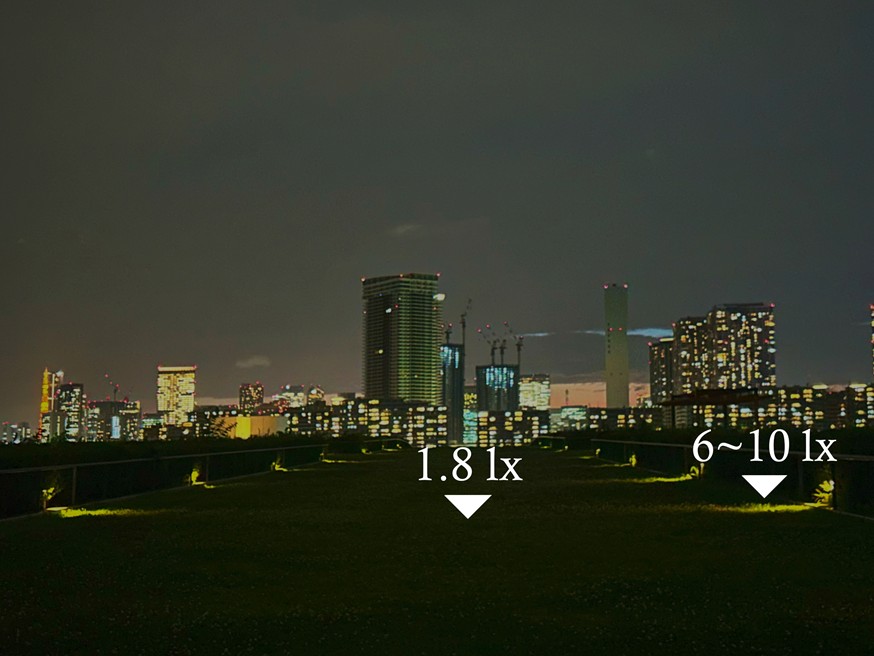
■The pedestrian bridge at Shijō-mae Station
In contrast to the Green Plaza, the pedestrian route from Senkyaku Banrai toward the station exhibited a problematic mix of lighting techniques. Specifically, the second-floor handrail lighting was designed such that its light source was directly visible from the first floor, resulting in noticeable and uncomfortable glare.
Furthermore, while the connecting passage incorporated white ceiling lights, spotlights aimed at the canopy, and footlights for path illumination, the spotlights were often directed toward the pathway itself. This orientation caused strong, unpleasant glare depending on the viewing angle. We feel that this particular aspect warrants significant improvement.



■Gururi Park and Seaside Area
On the route from the Green Plaza toward Gururi Park, the stair seating overlooking the Rainbow Bridge was impressive, but the staircase itself lacked lighting and had poor visibility. We noted safety concerns, especially at night, where the steps were difficult to see.
In addition, the glare from the lighting fixtures in the seaside tunnel space was significant, and we felt that improvement was necessary in both color rendering and glare control. In public spaces like this, lighting plans must aim to balance user visibility and comfort. This requires measures such as installing ground-level lighting to ensure the safety of steps and walkways, and selecting light sources that minimize glare.
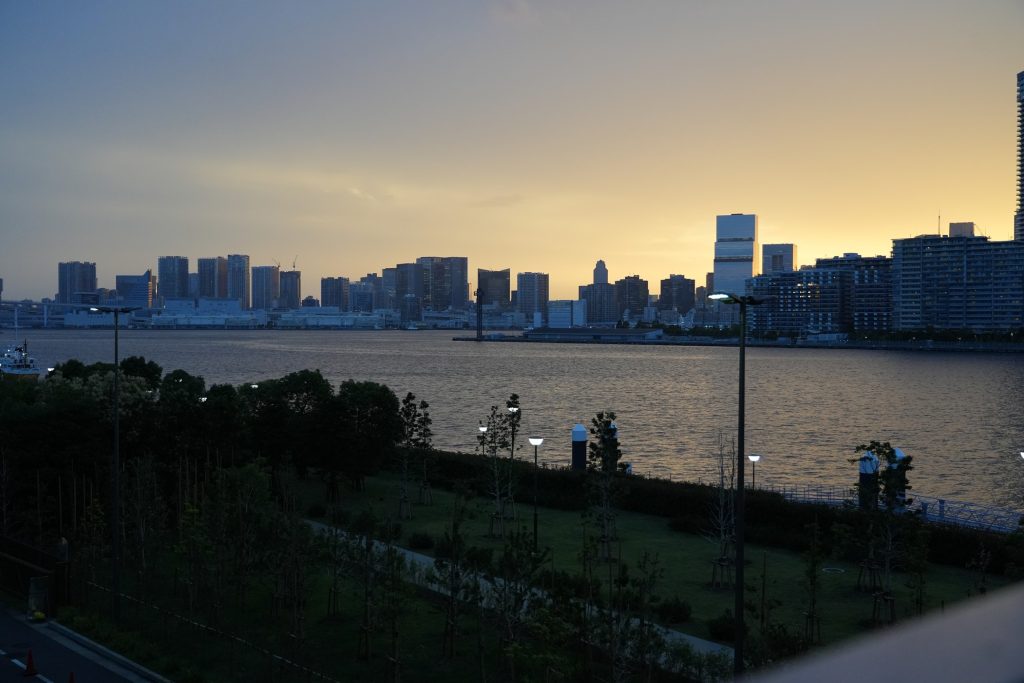
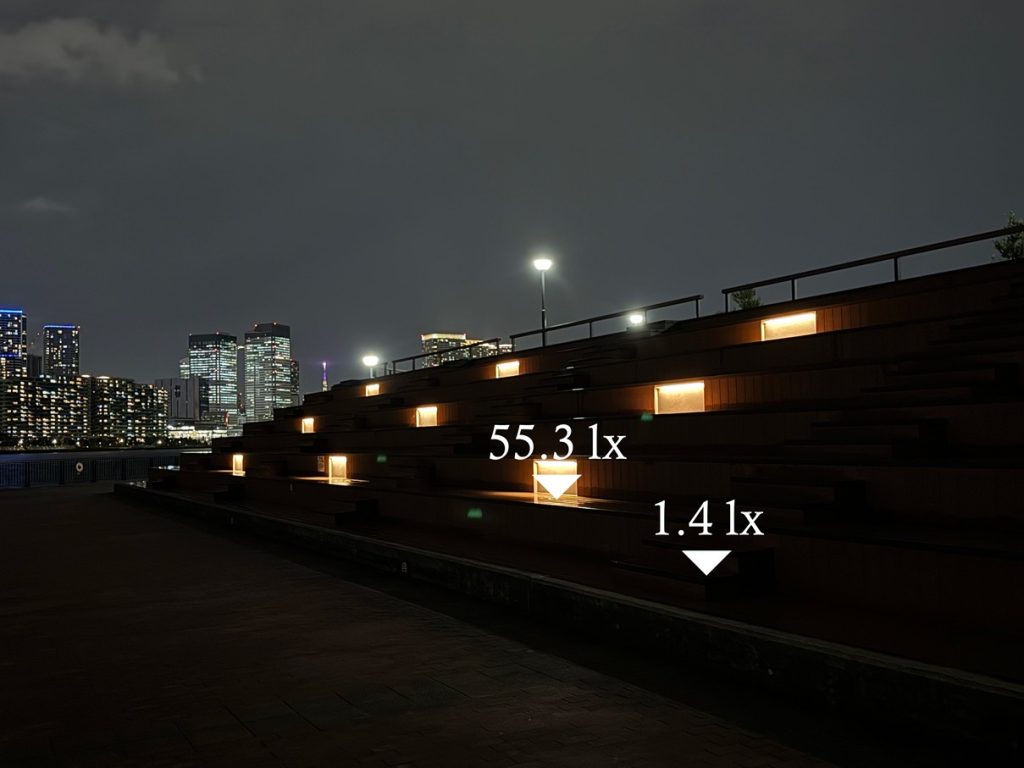

■Summary: Toyosu – An Urban Space of Light Maturing
This survey revealed that Senkyaku Banrai has been furnished with a lighting design that balances cultural individuality with a sense of unity, and the Green Plaza maintains a serene nightscape that respects nature. However, we also observed issues such as glare, inconsistency in color temperature, and safety concerns in areas where lighting had not been installed. To further improve the light environment, it will be necessary to balance visual comfort with the overall coherence of the streetscape.
In an urban space where various elements intersect, Toyosu appears to be continually seeking a new expression for Tokyo’s nighttime landscape. Lighting is a crucial element in the ever-evolving Toyosu, and it should remain a key focus in future design strategies. (Momoe Nomura)
Kaoru Mende / Lighting Design Workshop
3 day student workshop 2025
2025.09.13-09.15 Noriko Higashi
This year marks the fourth time the Lighting Design Workshop has been held. Nineteen students gathered from all over Japan to spend three days thoroughly learning about lighting design. With new programs added this year, the workshop has evolved further.
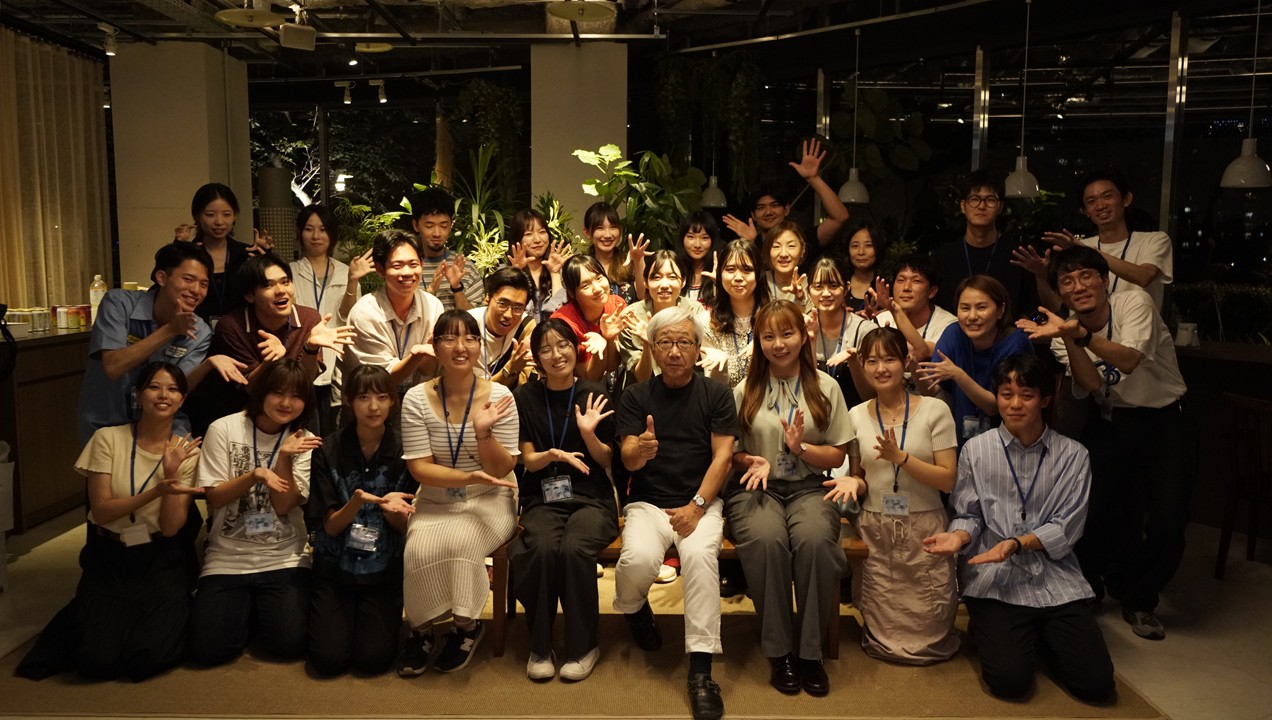
This is the fourth session of the Lighting Design Workshop, which we tentatively started in 2021.
This year, we again completed a packed program with 19 motivated students who gathered from across the country. In addition to nine varied lectures, this year’s program included training at a lighting manufacturer and site visits to various projects.
■Lectures
We provided a total of nine lectures, beginning with the foundational knowledge of lighting design, the design process, and the philosophy and methodologies of LPA’s lighting design. We also introduced specific projects, such as the Ishikawa Prefectural Library, Takanawa Gateway Station, and the Osaka Healthcare Pavilion at the Osaka-Kansai Expo. The themes and content of the lectures were highly refined through multiple internal reviews, making them concise and of high quality.
In addition, we included Q&A sessions between each lecture. For questions that could not be answered during the session, we posted the responses so they could be read by everyone, ensuring that we addressed the students’ inquiries as much as possible.



■Individual Assignment
Students participating in the workshop are given an individual assignment one month in advance. This year’s theme was “Redesigning Light.” Students were asked to re-examine the light in their own environment—their town, their usual train station, a shopping street, their school, or their home—and redesign it. They submitted their proposal summarized on two sheets of A3 paper. On the afternoon of the first day of the workshop, each student presented their work for five minutes, and everyone voted on the best proposal.
This year’s Grand Prize went to a redesign of a pedestrian walkway. The student redesigned a walking path that was currently unused and dangerous at night due to poor lighting, forcing people to walk on the busy road instead. Their concept focused on gentle and playful lighting to create a desired walking route. The proposal won half of all votes from the participating students.
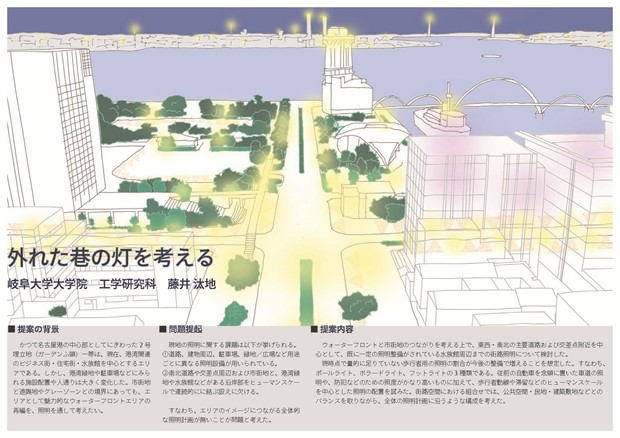

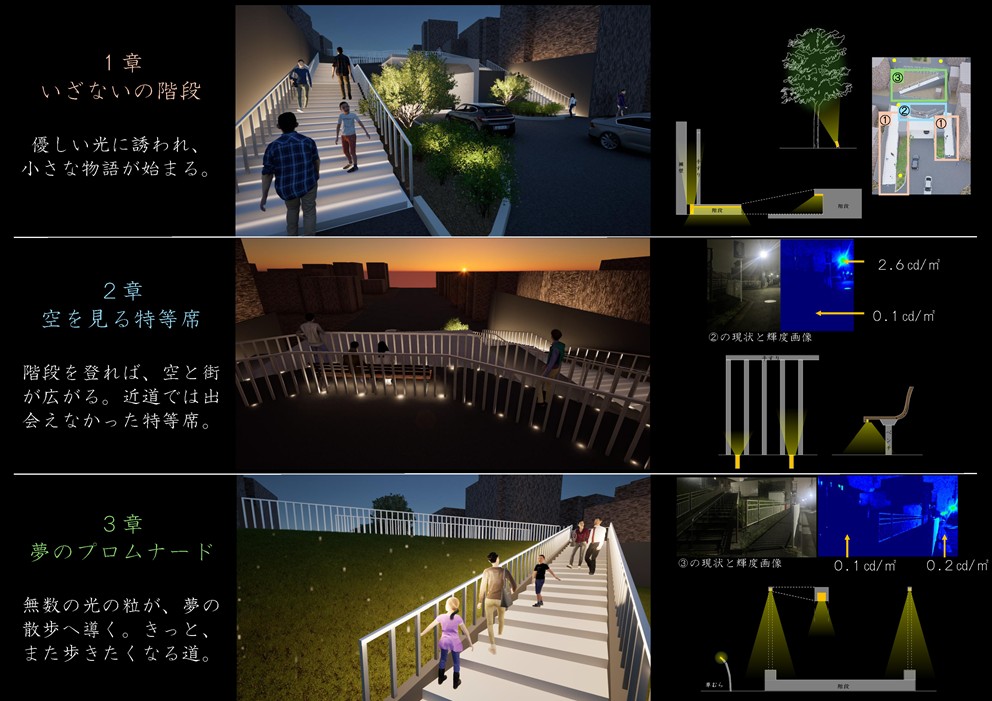
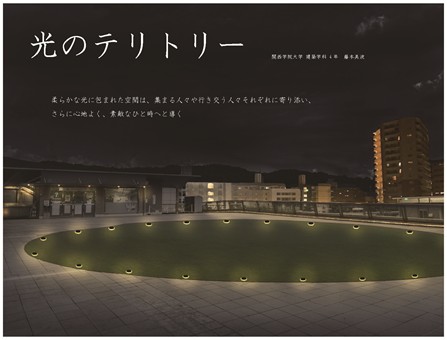
■Lighting Manufacturer Training
The “Lighting Manufacturer Training” was a new program added this year. In previous years, we had only been able to show lighting fixtures stored at LPA, but because there was a strong desire from students to learn more in depth, we were able to partner with Endo Lighting to make this a reality.
Nineteen students gathered at the Endo Lighting showroom for a 90-minute training session. Using actual lighting fixtures, we covered a wealth of content that only a manufacturer could provide, such as: how the sense of brightness can differ even with the same illuminance, depending on the material being lit; how changes in color rendering affect the perception of colors and objects; and how the fixture’s position can alter the atmosphere of an entire space. Feedback from the student surveys showed that this session was one of the most interesting parts of the workshop.
■Project Site Visits
In previous years, we conducted Night Walk Surveys, but this year, we decided to have the students actually see some of LPA’s completed projects. We toured the Tokyo International Forum, Tokyo Station, and Takanawa Gateway Station. We believe that seeing and experiencing these projects firsthand, in addition to the lectures, helped the students truly grasp the concepts. Hearing the explanations directly from the project designers likely changed how they viewed these familiar places they usually pass through without conscious thought.
■Group Assignment
After completing the individual assignments, various lectures, and project site visits, the students worked on a group output. This year’s group assignment theme was “Lighting Design for Peace.”
The groups were tasked with determining whether the power of lighting design could alleviate some of the world’s existing injustices, prejudices, discrimination, and wars. The participants were divided into three groups to start the assignment. This was a challenging task: to immediately discuss peace with strangers and, within one day, finalize and present a design for “Lighting for Peace.” The method of expression was completely free. They could draw, create a model, or even use physical expression.
The process began with defining peace. Despite their initial confusion over the vastly different approaches to the concept, the groups somehow managed to compromise and consolidate their opinions. In the end, it felt like they powered through the final push to get to the point of presentation. Each team came up with an interesting concept.
The proposals included: a plan where small, individual lights form homes and ultimately create a city; a design where the curtains of a regularly used church are made of light-emitting fabric that can be cut and distributed to wrap people during a disaster and then re-form the curtains when peace returns; and a concept where emotions are expressed through the color of light, which then combines with others’ light to create various light scenes. The open-ended nature of the expression made the assignment difficult, but it resulted in three distinct and interesting proposals. I believe the participating students gained a lot of inspiration from the arguments and expressions of the other teams.
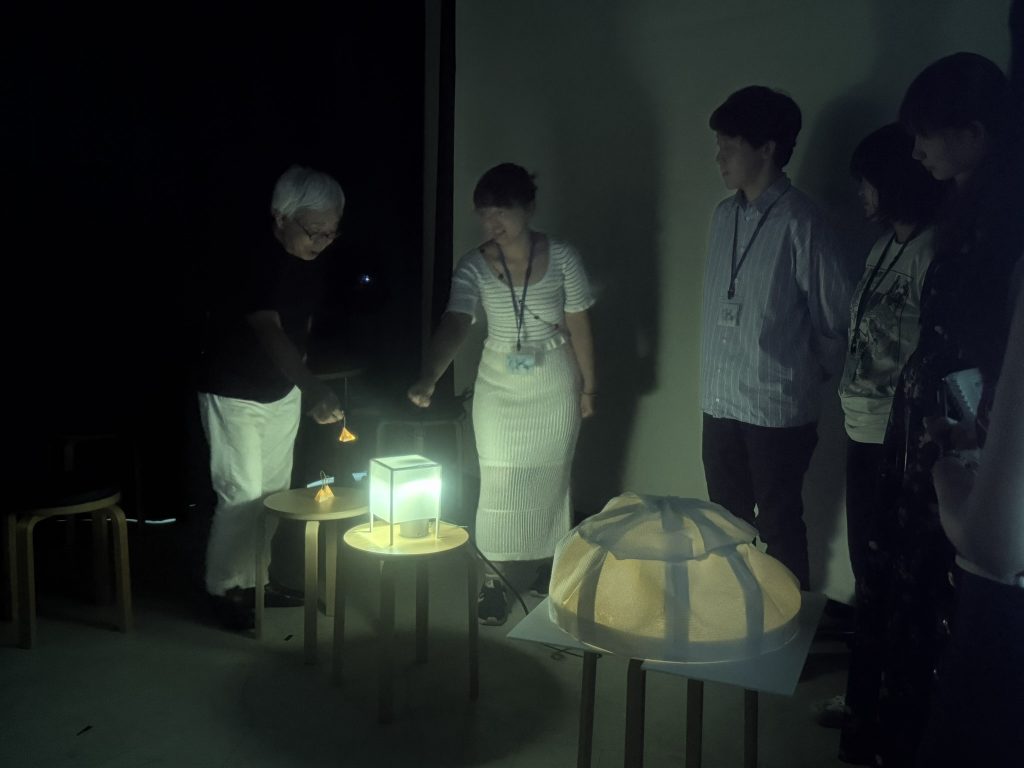
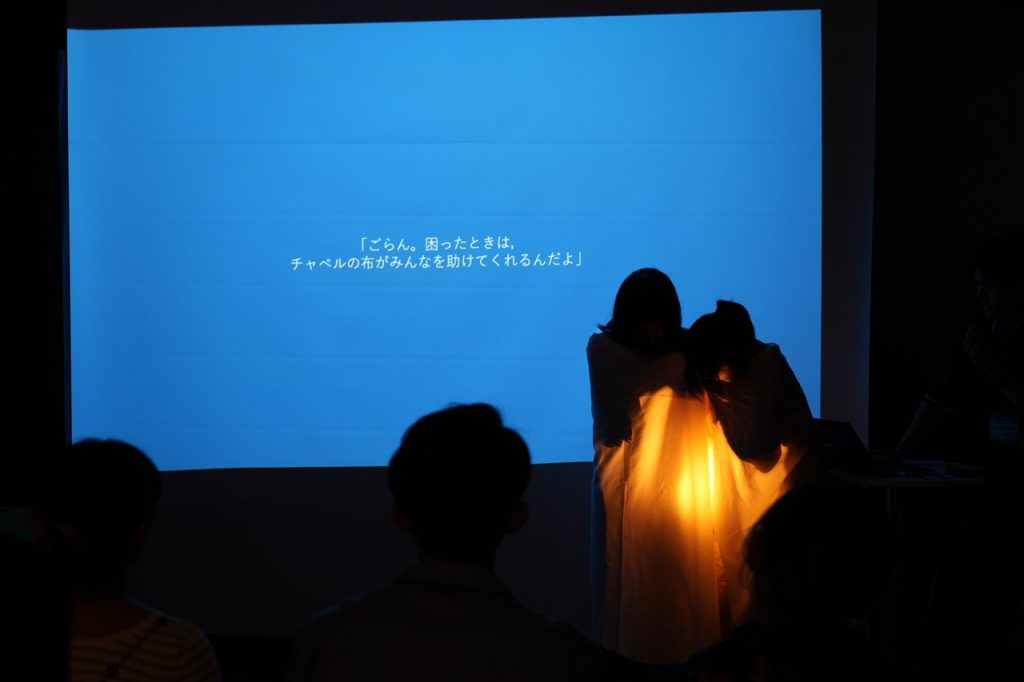

■Social Gathering
At the end of each day, we held a social gathering where everyone could share dinner together. This time was crucial for building relationships, as it gave students a chance to ask LPA staff questions they couldn’t fit into the lectures, and provided an opportunity for the students to talk among themselves. The final social gathering concluded the design workshop, with each person sharing their thoughts before receiving a certificate of completion. At the very end, everyone felt a little reluctant to leave, wishing they could continue the conversation just a little longer.
Over the course of three days, the students received a massive amount of information and were challenged to integrate the ideas of others to produce a final output. It must have been an incredibly intense workshop. I sincerely hope that the knowledge and experience gained here will contribute to a deeper understanding of lighting design. (Noriko Higashi)





